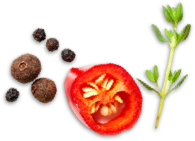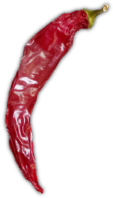
Find out more below, or download the Market Report – April 2019

There is a lot of pressure on raw material prices due primarily to political instability and high expectations from farmers. The harvest takes place between September through to March so is now drawing to a close. Fresh leaf prices are expected to open around 15-20% higher than last year.
The 2018 Turkish crop was around 5-7% less than the previous year hence there are minimal quantities remaining and we are awaiting news of the new crop. Prices for Albanian product are also higher (+20-25%) than this time last year amid reports of a poor 2018 crop. The summer crop was down, and the autumn crop is also around 10% less. Carry over from last year’s crop is addressing market demand but prices are moving upwards.
Prices increased by up to 40% at the beginning of the season, and although prices have stabilized since there is no carryover so prices are beginning to increase again. This is largely down to limited supply leading to high levels of adulteration (watering down of product). The Turkish Republic Ministry of Agriculture and Forestry Union have started a big program covering plantations, including a foreign weed management program and information flow with the EU. The project is in its early stages, but long team will help educate and increase number of field audits.
Seed Heavy rainfall affected the quality of Turkish product. There is still some quantity in the market, but the quality/grade is questionable – prices are static. Sellers seem unwilling to sell in the hope that prices will increase prior to the new crop in July/August. Syrian prices have leveled but remain higher than the beginning of the crop and there is a clear difference in quality.
A volatile environment means there is little product left in the market. Like cumin, due to weather conditions, there are variations in quality compared to previous years.
Most Turkish Fennel has already been contracted but the outlook is poor. Spot buying and selling is still possible though raw material prices are higher than last year and will likely stay at the high-end price mark of the market.
The market remains bullish and raw material prices are continuing to increase. The expected crop is pending on collection permits which will begin in March and end in June. If demand for extraction is higher then we will expect to see sharp price increases but these may not come to pass and there will be better indicators towards the end of May and early June.
The situation here is also bullish due to restrictions of collection permits granted by the Moroccan Government. Weather conditions in the natural growing areas are currently normal and there seems nothing unusual to report. Expectations are that the new crop will be on similar levels to last year.
Indications suggest prices will increase due to the value of Egyptian pound which is getting stronger against the US$ Good quality product is scarce, and prices are firm.
There is a shortage in the market of good quality product with available material not good enough for use in export. The shortage is inevitably leading to price increases and is not expected to ease until September.
The Egyptian harvest has stared and looks like being successful, however the UK market has now moved to UK and Hungarian origin. Harvest for these origins will not commence until July so it is too early to make any accurate forecasts.
The harvest has started in all growing areas and a significant increase of sowing areas in the Maharashtra, Telangana and Andhra Pradesh regions is leading to expectations of a good crop. Total production is estimated to increase by around 15% this season. Some product is being traded at lower prices than expected due to high moisture content. There is high demand for good quality material with attractive offered prices. In the Tamil Nadu region, peak harvest was in mid-March with higher prices versus other regions being prices being offered.
The world’s biggest producer, Vietnam will conclude its harvest in April, earlier than usual as farmers have attempted to reduce labour costs. Low price levels supported export volume from Vietnam and Brazil, showing a 20% increase year on year for the year to date February 2019 period. Global stock levels remain high. Although production costs are exceeding market prices in some countries, further pressure is expected in future months. The main harvests of the season are still ongoing and are expected to end by the beginning of May – around 50% of total production has been harvested to date. The upcoming harvests in Indonesia and China will begin in July. Despite favourable weather, production is expected to remain like last year as farmers have put less effort into their pepper farms. Vietnam and Brazil saw an increase in exports of around 20% year on year. Vietnamese black pepper prices strengthened around 9% versus last month’s prices due to good demand from Chinese speculators. Brazil followed the trend and prices increased by 6%. Stock levels are estimated to remain high in the coming months putting pressure on some origins to liquidate their stocks. As prices are already close to, or below production costs in some origins, price trends are not expected to show any significant

In the aftermath of the Chinese New Year celebration, prices for red bell peppers are rising. Several producers have been developing a strategy to artificially drive up prices which are now approx. 3-5% higher than in the week prior to the festival. Stocks in China are much reduced, and quality is also now questionable. Some pre-shipment samples have been rejected (due to excessive amount of seeds & stems) However on a more positive note SQF stock levels are good and we are also sourcing from Uzbekistan which is providing good quality product, though stocks from this origin are also now limited.
Green bell peppers have seen little change since the start of the year. Prices are expected to remain stable though there may be some small increases in the run up to summer. Chines origin product can often be offered with 2-3% sugar (without declaration), however rest assured we will keep away from sugar-added or sugar-infused product.
Prices for Chinese products are rising because of shortages in Europe resulting from the low yield caused by the long, hot summer last year.
The upcoming Spring crop will likely be affected by the cold, wet weather in the Chinese growing regions hence producers are expecting higher raw material prices.
Prices for Egyptian and Uzbekistan product are expected to be stable, however, quantities for white leeks are likely to be limited.
India’s overall 2018-19 acreage is expected to be lower than last season by around 15%. This is due to weak prices and large unsold inventories from the previous two seasons. Most of the low-quality dehydrated onion offers are fast disappearing and prices are increasing. US origin product planting is almost complete and expected to be around 6% below last year’s levels. Egyptian product is also estimated to be around 15% lower than last year. Raw material prices have increased as has demand.
Between mid-February to mid-March prices for Chinese dehydrated flake rose steeply before reducing a little in late March, however they are now on the rise again. Speculators appear to be holding up prices for of numerous reasons; firstly an unwillingness to release inventory at low prices because of their need to cover inventory carrying costs and their hope for higher prices in the future; secondly there are indications that government and insurance companies will provide minimum grower base pricing guarantees, subsequently reinforcing current high prices; thirdly reports of upcoming cooler weather and its impact on new crop yields. The new 2019 Crop is estimated to be 30% less than last year. New crop growth from observation of leaf and stem development through March was excellent giving reason to believe there would be normal harvest yields, however weather forecasts for April are not good which may reduce yields. Optimum bulb size and yields usually depend on warm growing conditions in April and early May for the Jinxiang Shandong area.
2019 Market Forecast
It’s too early to make accurate price forecasts as we still await harvests in the main growing areas of Shandong and secondary area of Henan. Additional factors will also affect the dehydrated market; prices of raw garlic after the harvest are as yet unknown and they will depend on the number of processors who decide to dehydrate; strict government environmental control for processors will also likely increase costs and prices.
Fresh market potential impact on the dehydrated sector
China’s fresh garlic cold storage facilities are at capacity with much more inventory than normal. Estimates suggest the fresh garlic industry (including China exports and internal fresh consumption) would have carryover inventory of approx. 1.5 million MT at June 1, which should be adequate to cover around 40% of total 2019 fresh product demand. With 30% reduced planting for the new crop, if yields are normal, total output would be approx. 5.9 million MT, which should be more than enough to cover total fresh and dehydrated global demand (estimated at 5.2 million MT). The fresh market segment consumes 85% of the entire garlic crop produced in China hence the magnitude of fresh has a direct impact on the dehydrated sector – carryover inventories will likely be very large. Although the large fresh and dehydrated inventories should have an impact in keeping prices lower, there are still some uncertainties; ie how much inventory speculators are carrying that will have an artificial impact on the market; and the actual new crop yields.

2018 Turkish Crop
Exports in March were 8,386 tons, compared to 7,807 tons last year, an increase of 7.5% · Exports year to date are 75,276 tons compared to 74,910 tons last year, an increase of 0.5% Year end exports are likely to end close to 2017 crop total exports which were 95,000 tons. With a further 7,000 to 10,000 tons of domestic consumption, carryover will once again be minimal. The Turkish lira has been volatile over recent weeks ahead of local elections which took place at the end of March. The future direction of the currency is unclear, though there are no more elections for another 4 years enabling the government to implement the necessary policies to promote economic recovery.
2019 Crop
Bloom began around the 10th of March. Between the 23rd-25th March widespread frosts saw temperatures between -2 and -5 degrees. At the time of the frost approximately 20% of the bloom had set, mainly around the Karakaya Reservoir, 40% of the bloom was underway and 40% had not yet started. Therefore 60% of the crop was at risk of frost damage. Significant damage is evident, and insurance companies have been called to assess damage. It is too early to quantify, but at this stage it looks unlikely the 2019 crop will reach the tonnage of the past two years.
The 2018 sultanas & raisins crop was short by approximately 20% in comparison to 2016. This is resulting in pushing prices up because less fruit is coming to the market. In contrast, export figures are like last year which means no decrease in demand due to higher prices. The South Africans are also looking for higher prices for their new crop

The 2018 crop is now mostly sold out due to the hot summer last year which caused low yields. There is a small amount of stock remaining, but over 90% of “grocery grade quality” is now sold. Because of the low yields of 2018, contracts have risen in price across the industry in order to encourage farmers to continue growing in 2019. Agricultural commodities have also increased in price due to the rise in wheat prices which has resulted in further increases. 2019 has been positive to date with peas planted in pretty much perfect conditions, however a strong harvest is also dependant on good conditions during flowering and harvest. If this is the case a good quality crop and yield will result, but it is too early to make these predictions yet. The waiting game now begins.
Forecasts suggest the US lentil area will decline by around 29% in 2019 (555,000 acres), the smallest since 2015. Based on these numbers and the five-year average, production is expected to be around 275,000 tonnes compared to 380,000 tonnes in 2018. The Canadian lentil area is also forecast to be less but by a lesser amount (4%). The US crop is normally green, whilst Canada is more heavily focused on red. Canadian exports jumped in February with a big increase in red whilst green exports were steadier. Only around 30% of Canadian lentils are normally exported, however this year that figure is going to be higher. Indian red lentil prices have been increasing due to government reluctance to lift import restrictions. This in turn has pushed prices upwards so the Indian situation will be key in the coming weeks. Overall, traded volumes of lentils are still low but only a small increase in trade can be enough to trigger price movements. Further increases in Indian red lentil prices could result in increased exports although Canadian prices would need to remain subdued.
The glut in global supplies is gradually being eroded but is still a big factor in the market. Smaller crops in various origins will keep stockpiles from rebuilding too rapidly, but it will take some time to work through existing supplies. As a result, prices are likely to be stable for the foreseeable future.

Demand for pumpkin seeds, especially European markets is slow, however other markets such as Indian and America continue to have strong demand. Raw material availability is starting to tighten but packers are actively chasing new business so are offering competitive packages in the hope of securing sales before the expected squeeze on raw material strikes. We’re expecting to see prices increase in the coming months. Domestic use in the roasting industry is increasing year on year and showing initial signs of putting genuine pressure on the quantity that China will be able to export.
The market is becoming tighter regarding unsold raw material. Stocks in Western Europe are low with deliveries into processors slowing. Every pre-supplier is struggling to get linseed into Europe and are now having to pay a premium for prompt shipments. Year on year costing has been hit by increases in the cost of paper and transport (fuel). Paper bags have increased by 10% in 2019 & transport rates are up 5%.
The market has been fairly flat in recent weeks; however we are now seeing additional demand from China. Expectations are that the market will likely remain stable.
Prices rose sharply during 2018 hitting all-time highs. Despite this, availability is still limited hence demand is constantly exceeding supply. Demand remains healthy, with prices being adjusted weekly around the globe, where fresh enquiries are landing more and more in the EU from the other continents as well.


Our new, state of the art Innovation Centre has been officially opened by local MP Dr Caroline Johnson. The £750,000 investment is central to the company’s exciting plans to develop and expand our Innovation and New Product Development lines in 2024 and beyond and will enable the us to host Culinary Workshops & Innovation days…
View Article
Food Manufacture Excellence Awards 2024 Factory Manager of the Year WINNER – Kate Clawson. Proud to announce our very own Kate Clawson has won the prestigious Food Manufacture Excellence Factory Manager of the Year 2024 Award. In front of a packed audience at London Hilton Bankside on 8th February, Kate walked off with the top…
View Article
NEW: CHEF WILLIAM TEMPURA BATTER MIX Use as a crisp, light coating for seafood, chicken and vegetables. Tempura Batter Mix is lighter and more delicate than regular batter. It is the perfect batter for seafood, chicken & vegetables, especially oriental and Asian style dishes. Click here for Tempura Fried Chicken recipe! For more information contact our…
View Article